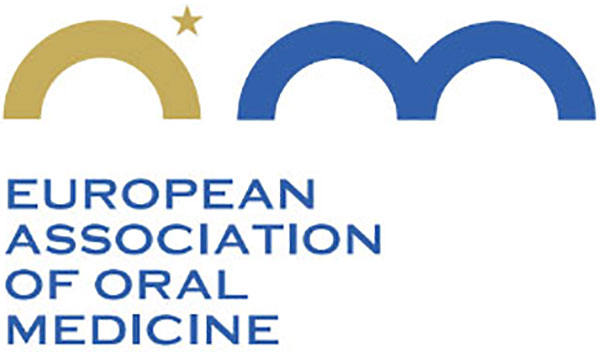Oral Lichen Planus
Definition
Oral lichen planus is a common chronic inflammatory mucocutaneous disorder that typically affects the skin and/or mouth. Lichen planus can also affect other non-oral mucosal surfaces such as the genitals anus and pharynx, and rarely the conjunctiva and oesophagus.
Epidemiology
Lichen planus affects 1-2% of examined populations. It most typically arises in middle to late aged females, although can arise in childhood and adults. Oral lichen planus has a worldwide distribution. There appear to be no notable increased risks associated with particular ethnic groups.
Clinical presentation
Oral lichen planus has a bilateral distribution that typically affects the buccal mucosa, dorsum and ventral surfaces of the tongue and/or gingiva. Other mucosal surfaces can be affected but palatal involvement is particularly rare.
Oral lichen planus is often asymptomatic, although when there are areas of erosion or ulceration, the patient may have variable amounts of discomfort, being particularly troublesome when eating spicy or acidic type foods.
The variable clinical presentations of oral lichen planus comprise white patches, erosions, ulcers and, very rarely, blisters. The classification of the clinical presentation of lichen planus can be split into the following:
- Reticular oral lichen planus – this is the most common presentation, manifesting as a network of white striations. These lesions are often painless, although patients may complain of a slight roughness or dryness to the affected mucosal surfaces.
- Plaque-like oral lichen planus – this manifests as areas of homogenous whiteness. This typically arises on the buccal mucosa or dorsum of tongue and may be more prevalent amongst those who are smokers.
- Papular oral lichen planus – this manifests as small white raised areas approximately 1-2mm in diameter. These again typically arise on the buccal mucosa and dorsum of tongue, although may also present on other mucosal surfaces.
- Erosive oral lichen planus – this is sometimes termed atrophic oral lichen planus. In this form there are areas of redness within the aforementioned white patches. Patients with this type of disease often complain of oral soreness
- Ulcerative lichen planus – there are frank ulcers within the areas of whiteness. Patients complain of continued soreness, this being particularly severe with spicy or acidic foods.
- Bullous lichen planus – this rare presentation manifests as small vesicles or blisters (bullae) within the white patches.
Patients with disease involving the gingiva may have areas of white patches or striae superimposed upon redness of the gums. The latter is often termed desquamative gingivitis and can be extremely painful.
There is little predictability as regards the frequency of non-oral disease in patients with oral lichen planus. Likewise the oral features may precede, accompany or follow lichen planus affecting other sites.
Aetiopathogenesis
It is believed that oral lichen planus represents a cell-mediated immunological reaction within the affected tissues. The precise trigger for this is not known. The precise cause of oral lichen planus remains unclear in most cases.
Some patients appear to have an identifiable precipitating factor, and these are often termed lichenoid reactions. Occasional patients may have isolated areas of lichenoid reactions adjacent to amalgam restorations. Similar observations have been reported with dental restorations made of other metallic and non-metallic materials.
A small minority of patients may have lichenoid reactions that arise following drug therapy – particularly non-steroidal anti-inflammatory agents, beta-blockers, sulphonylureas, gold, penicillamine, allopurinol and occasionally anti-malarials. Lichenoid reactions can arise in patients who have chronic graft-versus-host disease subsequent to bone marrow transplantation.
It has been suggested, but remains unclear, that there has been associations between oral lichen planus and hepatitis C virus infection. This association appears to occur more often in individuals living in areas of southern Europe, particularly Portugal, Spain and Italy. An association between hepatitis C virus infection and oral lichen planus has also been observed in individuals resident in Japan. Such associations may be related to the carriage rates of Hepatitis C in these parts of the world, or reflect some genetic predisposition to HCV-related oral lichen planus.
Diagnosis
The diagnosis of oral lichen planus is initially based upon the clinical presentation of bilateral white patches with or without erosions, ulcers or blisters, typically affecting the buccal mucosa, dorsum of tongue and gingiva.
Biopsy with subsequent histopathological examination of affected tissue is essential to exclude other disease that may mimic oral lichen planus – such as lupus erythematosus. In addition, it is advantageous to undertake a biopsy to identify possible areas of cellular atypia (dysplasia) within the involved tissue.
Treatment
Patients with white patches are generally asymptomatic, although they may complain of mild oral roughness, soreness or dryness of the oral mucosa. This generally does not require treatment. Individuals with erosive, ulcerative or bullous disease generally tend to have oral discomfort, particularly with spicy or acidic foods, and thus require treatment.
The management of painful oral lichen planus usually comprises:
- Relief of painful symptoms – this can best be achieved with regular use of benzydamine hydrochloride (0.15%) spray or mouthrinse. When this is not available, it may be appropriate for the patient to apply 2% lidocaine gel to painful areas; •
- Treatment of definitive disease – topical corticosteroids are the mainstay of treatment of oral lichen planus. A wide range of agents are suggested to be effective . These include:
- Triamcinolone acetonide (0.1%) and 1% carboxymethylcellulose paste
- Betamethasone mouthrinse (500mcg dissolved in 10-15ml of water) used as a mouthrinse up to 3 times daily
- Fluticasone spray (50mcg per puff) – sprayed on affected areas up to 3-4 times daily
- Prednisolone mouthwash (5mg dissolved in 10-15ml of water) and used as a mouthrinse up to 4 times daily
- Beclometasone spray (100mcg per puff) – sprayed 3-4 times daily on affected sites
- Clobetasol ointment (0.05%) applied to painful areas 3-4 times daily
- Fluticasone cream (0.05%) applied to painful sites 3-4 times daily
Where disease appears to be recalcitrant to such therapy, a number of other strategies may be considered:
-
- Topical tacrolimus (0.1%) applied to painful areas twice daily
- Ciclosporin mouthwash (100mg per ml) used as a swill and spit mouthwash twice daily
Severe disease may warrant short-term systemic corticosteroid therapy (e.g. prednisolone or deflazacort), with additional corticosteroid-sparing immunosuppressant regimes such as azathioprine. Patients with symptomatology affecting other mucosal surfaces or the skin require referral to appropriate specialist for further evaluation.
Prognosis and complications
Oral lichen planus persists for many years, resolving rarely. The principle aim of treatment is to heal areas of painful erosion, ulceration or blistering.
Long-standing oral lichen planus rarely gives rise to any notable complications, however, there is some concern that lichen planus of the mouth may have some malignant potential. This possible association with oral squamous cell carcinoma remains controversial. Although there have been many studies examining the malignant potential of oral lichen planus, most have been retrospective, and some have not described the disease in any great detail. In addition patients have developed oral squamous cell carcinoma at sites distant to those affected by lichen planus.
It is presently suggested that 1-3% of patients with long-standing oral lichen planus may develop a squamous cell carcinoma of the mouth. Whether this reflects a common cause or that lichen planus does indeed predispose to oral squamous cell carcinoma remains unclear –lichen planus is common, and an association with squamous cell carcinoma might be coincidental.
In view of the controversy regarding the malignant potential of lichen planus, it is recommended that all patients are regularly reviewed by a health care provider for changes suggestive of potential malignancy of the oral cavity. Isolated areas of increasing whiteness, redness, speckling (areas of redness and whiteness) or solitary ulceration unlikely to reflect local trauma require further specialist investigation (usually by histopathological investigation of lesional tissue).
All patients with oral lichen planus should be advised of the controversy regarding the malignant potential of oral lichen planus, and provided with appropriate preventative advice – particularly the avoidance of tobacco and alcohol and betel, and empirically a diet rich in vitamins A, C and E and the maintenance of good oral hygiene.
Prevention
At the present time, as the cause of lichen planus is unknown, there is no specific preventative programme for this disorder. Likewise there remains no evidence that modification of diet or oral hygiene will lessen the possible development of symptomatic disease. However, regular clinical review is important in view of the controversy regarding the malignant potential of this disorder.





Further reading
1 Scully, C, Beyli, M, Ferreiro, MC, Ficarra, G, Fill, Y, Griffiths, M, Holmstrup, P, Mutlu, S, Porter, S, Wray, D. Update on oral lichen planus: etiopathogenesis and management. Crit Rev Oral Biol Med 1998; 9:86-122.
2 Rodstrom PO, Jontell M, Mattsson U, Holmberg E. Cancer and oral lichen planus in a Swedish population Oral Oncol 2004; 40:131-138
3 Carrozzo, M, Gandolfo, S. Oral diseases possibly associated with hepatitis C virus. Crit Rev Oral Biol Med 2003; 14:115-127.
4 Eisen, D. The clinical manifestations and treatment of oral lichen planus. Dermatol Clin 2003; 21:89-89.
5 Mattsson, U, Jontell, M, Holmstrup, P. Oral lichen planus and malignant transformation: is a recall of patients justified? Crit Rev Oral Biol Med 2002; 13:390-396.
Links
www.emedicine.com – the dermatology section has a detailed review of oral lichen planus entitled “oral lichen planus” by Dr P Sugerman and Professor S Porter (accessed on 4 November 2003).
http://www.update-software.com/abstracts/ab001168.htm - Interventions for treating oral lichen planus (Cochrane Review by Chan, ES-Y, Thornhill, M, Zakrzewska, J (accessed on 4 November 2003).
http://www.aad.org/pamphlets/lichen.html (accessed on 4 November 2003).
http://www.nlm.nih.gov/medlineplus/ency/article/00867.htm (accessed on 4 November 2003).
www.ivillagehealth.com/experts/ent/qas/0,,242110_174795,00.html (accessed on 4 November 2003).

